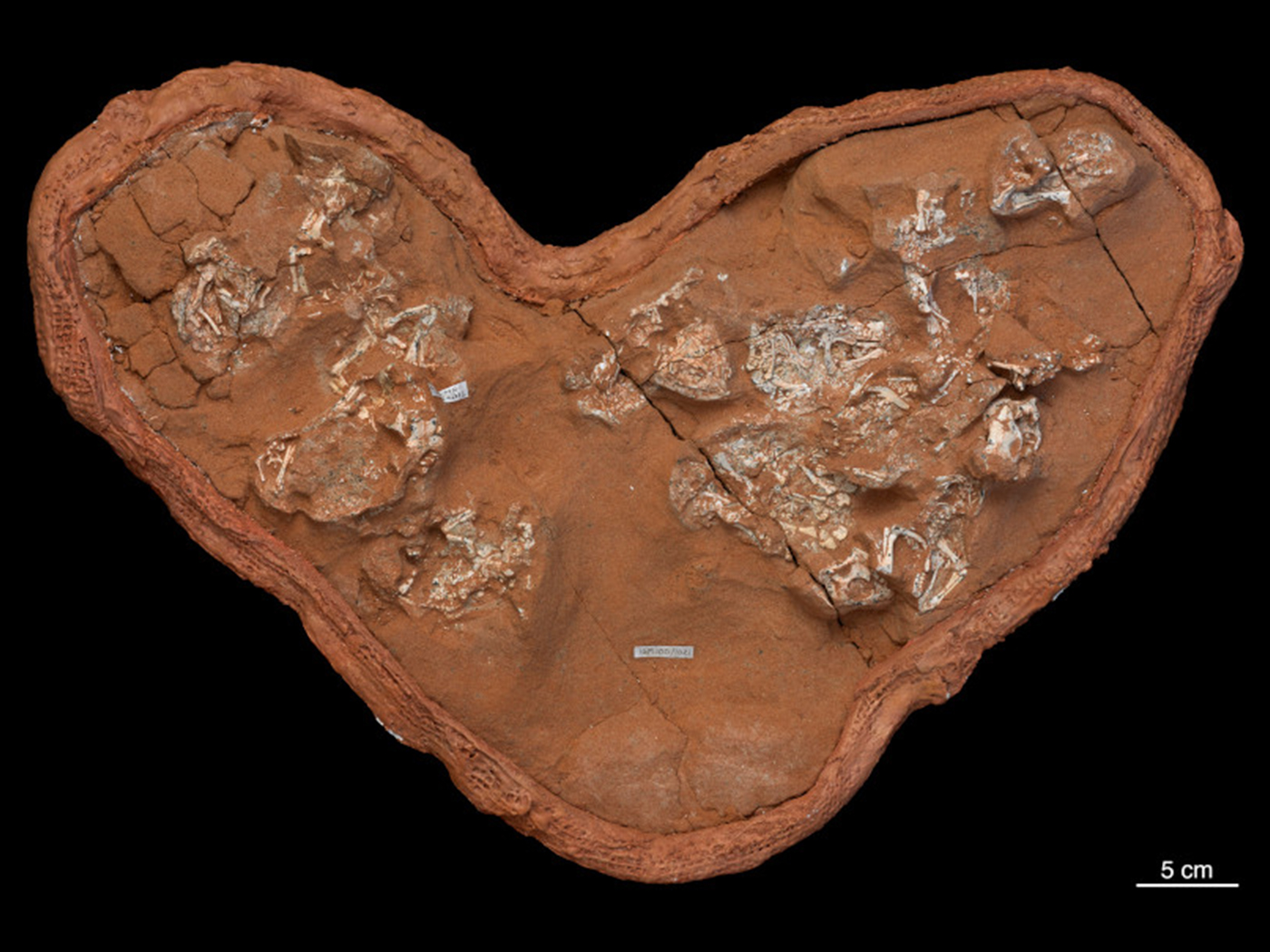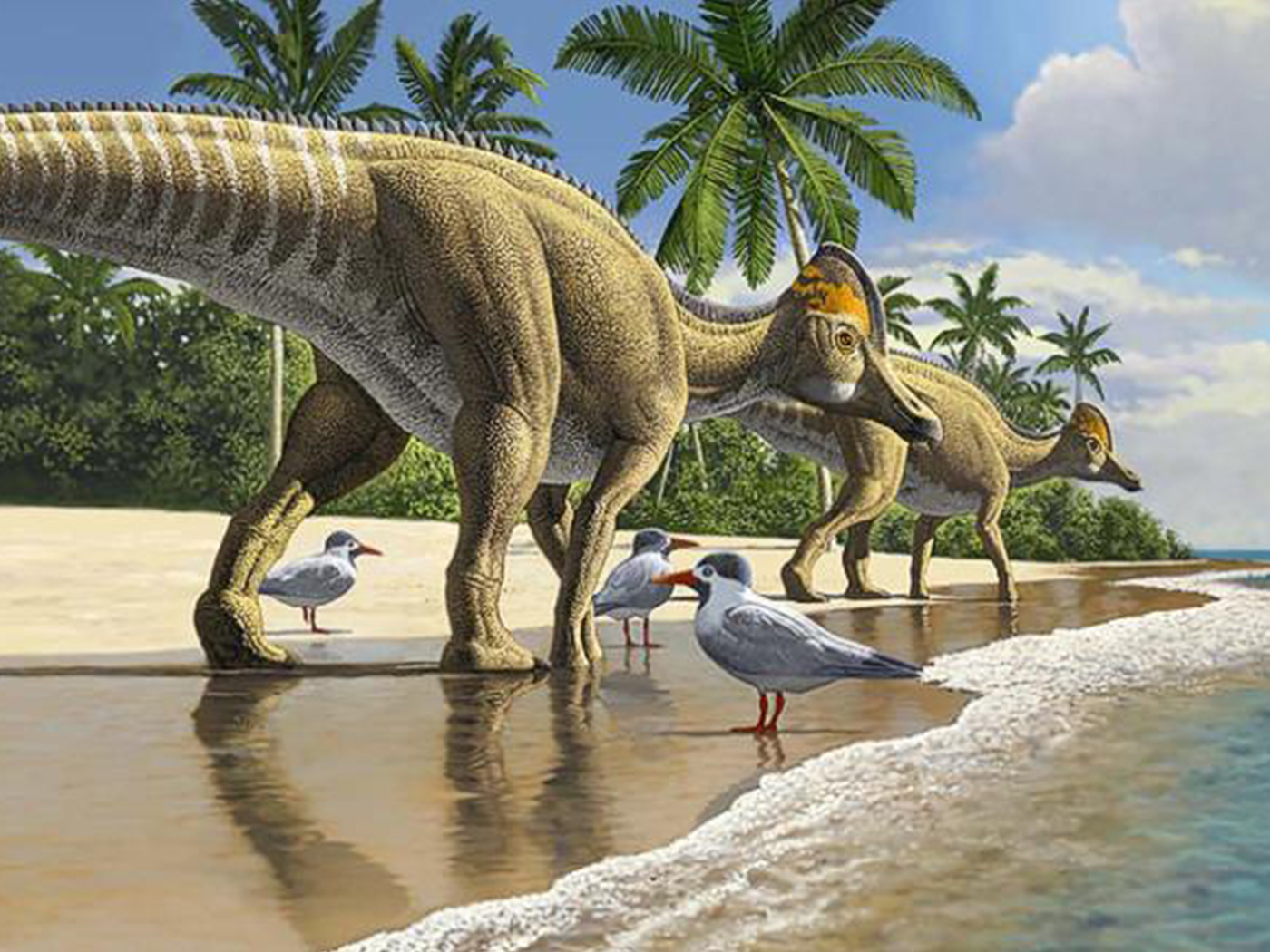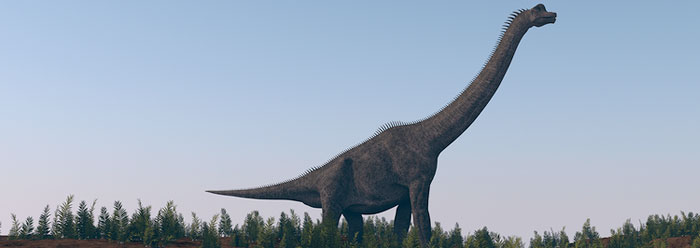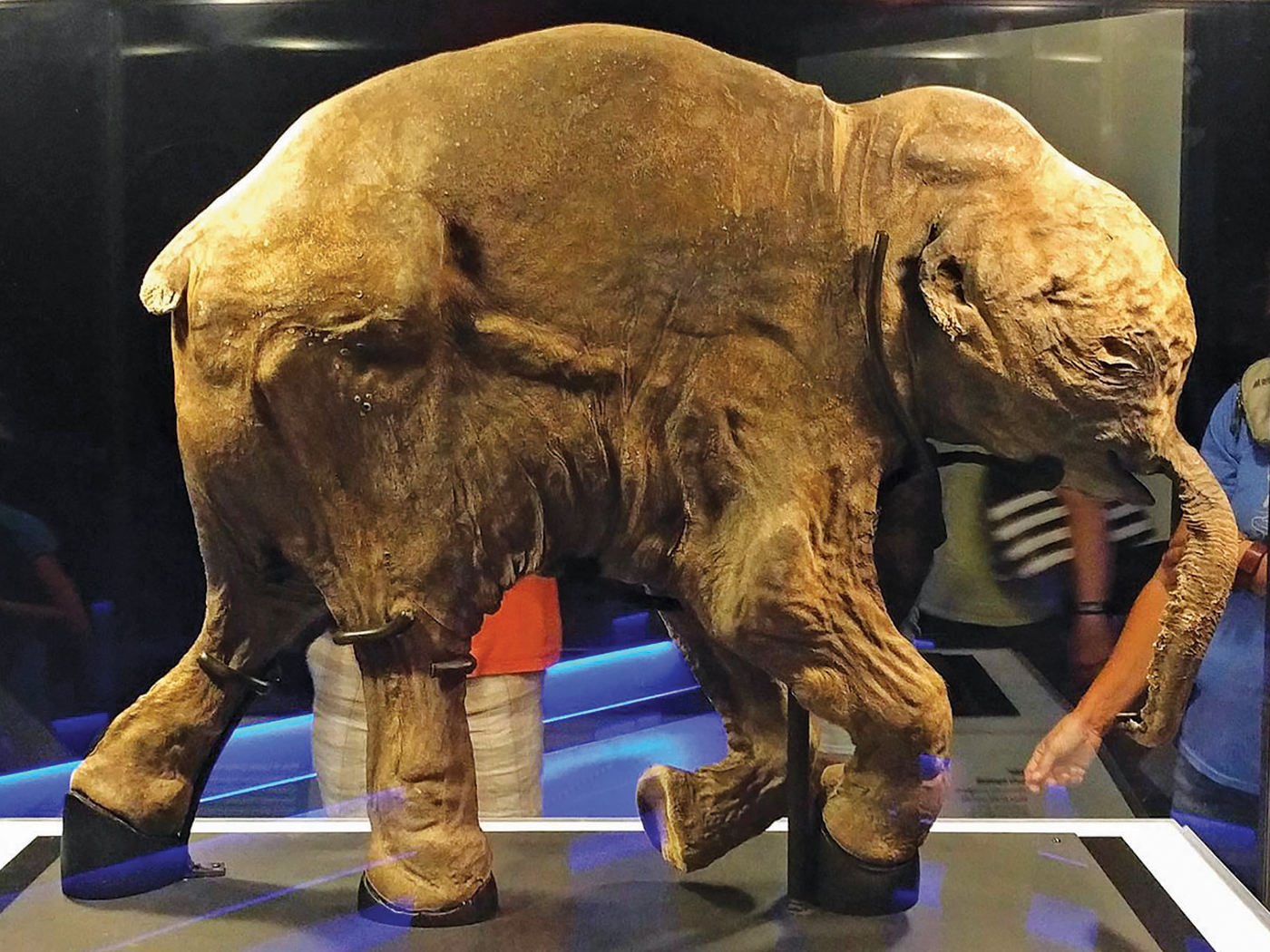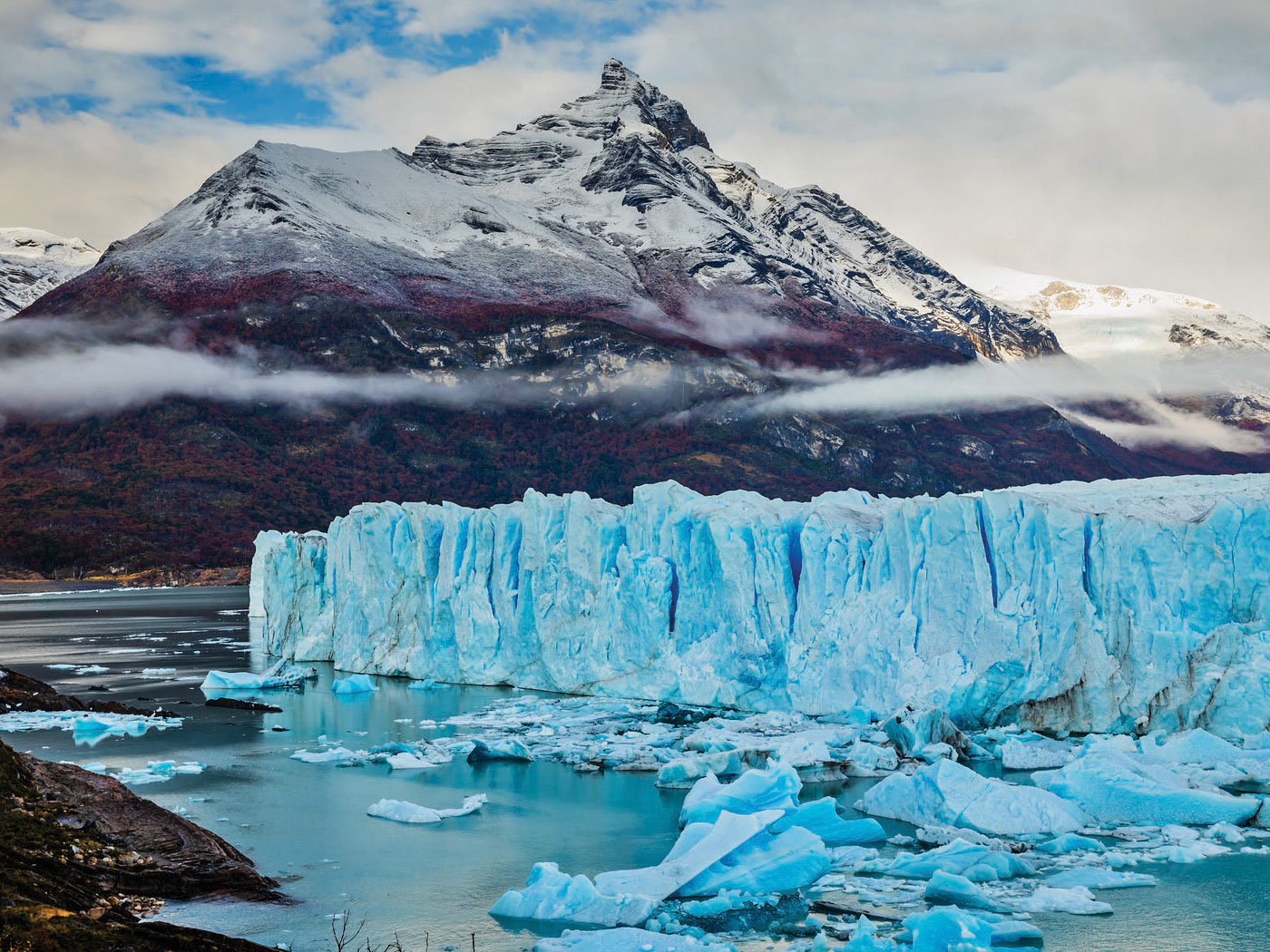The Bible is clear. The ancestors of every animal that ever lived were created during Creation Week. Each basic animal type was created "after his kind" and all subsequent individual animals, including dinosaurs, descended from these created categories.
On Day Five (Genesis 1:20-23) God created marine life and flying animals, but animals such as the plesiosaur and flying reptiles weren't dinosaurs. However, the Bible does mention "great whales" (v. 21) literally "great sea monsters" or "great dragons." Such terms bring up images of beasts reminiscent of modern re-constructions of dinosaurs and giant marine reptiles.
Day Six saw land animals created (vs. 24-31). Since dinosaurs were land creatures of a variety of sizes and habits, they would be included among the various "kinds" of "living creatures": the "cattle" or domesticated animals; the "creeping things" or small animals; and the "beasts of the earth", the large animals. They were of necessity air-breathing and land-dwelling.
At first, everything was "very good" (v. 31), but soon sin entered, resulting in the curse (Genesis 3) and, eventually, Noah's Flood (Genesis 6-9). Noah was told to take on board the Ark two of each kind of created animal "in whose nostrils was the breath of life, of all that was in the dry land" (7:22), including, no doubt, dinosaurs.
Outside the Ark, marine creatures died by the trillions, but at least some of them survived to continue those "kinds" after the flood, and thus at least some marine "dragons" survived. Sailors have ever since, even up to the present, reported "dragons" at sea. It may be that some are still alive.
The land and flying dinosaurs could only have survived on the Ark, only to disembark at the end of the flood into a strange and hostile world. We can surmise that the environmental conditions, with the sparse vegetation, the destruction of the pre-flood water canopy, and the temperature extremes during the ensuing Ice Age would have caused many animal types to become extinct, a process which continues today. Evidently the dinosaurs just didn't make it!
But there is good evidence that they survived at least for awhile. God's description of the large "behemoth" in Job 40:15-24 sounds remarkably like a large sauropod. And the description of "leviathan" (Job 41) seems to imply the kind of huge, fearsome beast reported in many "dragon legends" from every continent around the globe.
In fact, "dragon legends" are best understood as the faded and/or embellished memories of real human encounters with dragons. Sober historians from Herodotus to Marco Polo to Alexander the Great and many others appear to be relating such encounters, and their descriptions of these beasts sound like dinosaurs. Likewise, American-indian stories of the "thunderbird" sound like a giant flying reptile, and some of their cave drawings resemble dinosaurs.
The barest possibility exists that some land dinosaurs could still be alive, as reported by certain rain-forest inhabitants, but more likely they are all extinct.
There is much we don't know about dinosaurs, but the evidence fits the Biblical model well. Evolutionists, however, have difficulty explaining away dragon legends, cave drawings, and even modern "sightings." Furthermore, they can't explain either their demise or their evolution. The "just-so" stories they tell are inferior to a reconstruction of the past based on the Bible.
*Dr. John Morris is the President of ICR.





